Blogs
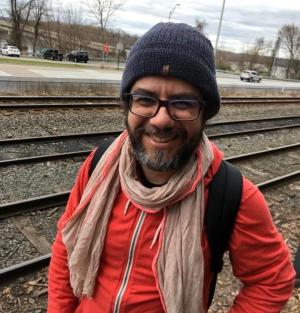
I continue pondering about clowns and clowning as I try to figure out how to engage my classroom with performance and clowning. I continue to contemplate the song[1] that asks: What is it that you give me? That has no measure, nor ever will? The clown is the purest excess, the figure of the exaggeration. The clown’s actions are always too much or too little. They carry something more than what is human, that which we all lack, that we owe, that we hope for, that is known to be lost. The clown is life’s box of surprises, Pandora’s box, the lost key to our desires. The clown is the poet of Manoel de Barros who will irrigate the fields with a sieve. What will it be? What has no remedy, and never will? What has no recipe? The clown has the remedy for all the ills in the world, but always forgets the exact recipe for things. It is also a risk because the clown offers us a mirror of ourselves that can frighten us, that makes us revolt. And that’s how it is, either the clown has the medicine but forgot the prescription, or they have the prescription but didn’t take the medicine. A disaster. What will it be? What happens inside us That shouldn’t? That defies the ones who are absent? The clown always defies authorities because they don’t even know what authority is. In the world of clowning there are no real hierarchies. The ones shown are only for the performance. The clown is an anarchist, they make their own laws. The clown lives solely and exclusively on the joy they desperately seek and give. They live in disregard of every law, of every yoke, of all suffering, of all pain. As the comedian Leo Bassi said, “The buffoon respects nothing and no one, be it the president, the emperor, himself, or even God.” What will it be? What is made of brandy that does not quench? What is it like to be sick of a revelry? The clown’s joy is the shadow of all our sadness. Their show doesn’t want to change the world, but just to offer a laugh, like brandy, to make life more bearable, to be able to take another step, to believe once more. The clown is always sick from their revelry, since their revelry is a flame. What will it be? That not even ten commandments will reconcile Nor any ointments relieve Nor all the breakers all alchemy Nor all the saints Clowning is a covenant without promises, a faith without beliefs, a convent of stupid monks who live off in an animist world. When they pray, they get the order of prayers wrong, when they email the prayer they send it to the wrong saint. They confuse the Orixás, call Jesus “Genésio,” think Ave Maria is Maria Bonita, offer padê for Exu while praying to the Holy Virgin, not really sure if she actually is a virgin. They call Buddha “my king,” Jesus “my comrade,” and Muhammad “my partner.” With all due respect! But don’t doubt the clowns, those holy knotty monks! In their shows, some of them carried the magic of witches and learned alchemy from magicians, dances from shamans, and spells from Spirits. What will it be? What has no rest, nor ever will? what has no limit? The world is so complicated now that the task of laughter is an endless, restless task. Joy puts a limit on hate, debunks anger and undoes the knot of resentment. Only joy has no limits in all its immoderation. Only a happy people will engage the revolution! What is it that you give me? That which burns me inside, what happens to me? That which disturbs my sleep, what happens to me? Ask any clown what’s burning inside and what’s more than heartburn. What makes the clown lose sleep is the quest to find a new way to make somebody laugh: a new face, a new choreography, a new tumble, a new song, a new shame, a new trip, a new look. What is it that happens to me? That all the tremors come to shake That all the ardors come to fan me That all the sweat comes to soak me That all my nerves are begging That all my organs are cheering What a fearful affliction makes me beg Clowning, like poetry, is the art of wonder; of the unkempt, disorganized chest; of the incessant search for a fullness that, it seems, was promised to us somewhere. However, the clown never searches for things to fulfill their heart. A flower is enough to fulfill the clown’s heart and make their green nose happy! Clowning is the fullest acceptance of our glorious limitations and its full celebration. Clowning is feeling every organ of the body vibrating and making it all laugh. Clowning is the ability to be kin with other species, to see the earth as a glorious place where billions of other worlds live. Wonders without end! Clowns try to learn to laugh like the animals do. Clowning is the art of listening, of listening where no one knows how to listen. Clowning is knowing how to look where no one else sees. And making people feel heard, seen, and welcomed. The art of clowning is pointing to our broken and breakable hearts, to the most exact compilation of the index of our faults. Clowning is thus our most complete translation. What is it that you give me? That is not ashamed, and never will be That has no government, and never will That has no sense What makes a clown a clown are their mistakes, their faults, their scattered pieces, their stupidities, and their open view of themselves. They know, with the qoheleth, that trying to go anywhere is running after the wind. But they love the wind! They’ve already made so many mistakes, they’ve already tripped over their own feet, too; they’ve done a lot of nonsense; they’ve already hurt a lot of people, they’ve already saddened so many others. But clowns don’t carry the guilt or shame of what they are because they know they are incredibly imperfect, exuberantly limited. They learn along the way. They change! They carry within themselves the feeling we carry within us: a simple, vulnerable, malleable, and vertiginous matter, and it is from this matter that we are all made. Oh, those clowns… they are a joke. What a joke! [1] The conversation is with the song “O Que Será que Será” (“What Will Be Will Be”) by Chico Buarque.
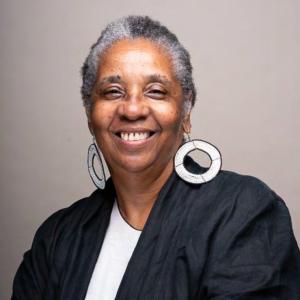
Part Four: Ritual is a Form of Activism Engaging ritual as an individual or as a collective act of embodiment challenges ideas about the source and nature of our intelligence and for some it challenges ideas about how we arrive at knowing. As a form of activism, ritual invites us into the process of restorying that counters colonizing stories which perpetuate cultural and gender hegemony. Rituals also take the diverse traditions of old narratives and gives them meaning for the present context or need. The restorying in ritual also centers diverse intelligences (bodily-kinesthetic, environmental, rhythmic, visual, auditory, social, etc.,) in a nonhierarchical manner. It affords us to remember our own story in relationship to the transcendent, to remember a people’s story in relationship to the unseen yet felt power of spirit. Our ritual restorying is another form of both our personal and collective agency. Ritual focuses on lived and innate capacities that are in operation to benefit us and community. Imagine that – using our intelligence for our personal and collective benefit, not for institutions or capitalizing agendas. We get to use our restorying in ritual to practice “being” while welcoming others into the same practice. This is primarily the role of community participation in ritual; to show our authentic selves. Whether it is the restorying of a grief ritual, the restorying of a ritual for renewal and rebirth, a ritual of covenant or a ritual of invocation; the community’s role is to authentically show up. Here is where ritual begins to counter models of acceptability, belonging, worthiness posited by dominant forces or groups that exclude, marginalize, and perpetuate othering. If the intent is transformation and ethical change, ritual can construct a valid and mutually beneficial pathway for creating community strong enough to hold one another’s truths.

Like many colleagues, a great joy of teaching is mentoring students into employment. I was well mentored, and I hope I have done well by my students. Recently, I received a call from a former student who has been serving in the local church and now wants to turn their attention to joining a faculty. While enrolled in graduate school, I knew them as a creative, capable, and dynamic student. I was delighted when they wanted to talk about the prospects of joining a faculty. During our conversation, they asked all the right questions and was well-prepared, having studied the school to which they were going to send their application. I knew the school and I thought they would make a good fit with the faculty. But as we talked, I developed reservations. I realized that the school was in the middle of the country and in a rural section of the state. I asked my former student if they had considered what it would be like to live in such a different culture and be surrounded by such different political climate than the one they had known for the last ten years. With some hesitation, they said that they did not think the location of the school mattered if the position was a tenure track job in their field. Ugh! There is more to a successful career than the right job. What of the quality of life afforded to you by the geographic location of the school? Yes, learning to flourish on a faculty requires attending to the professional aspects of scholarship. Equally, or in some cases more importantly, flourishing also requires attending to the personal and familial aspects of life. Where you reside, where you call home, where you locate yourself and your family is critically important to your teaching and teaching life. Location matters. BIPOC colleagues have a particular challenge when trying to live in rural areas, in middle America, or in predominantly white spaces where the police and the neighbors assume you do not belong in those neighborhoods simply by profiling your raced and ethnic body. What do you do when the quality of life within commuting distance of the school is inadequate - inadequate for the needs of your family, or even dangerous? Racial ethnic colleagues struggle with: finding hair salons, barbershops, hair products, body care, medical care locating foods of their ethnic preference or religious need romantic options for socializing making friends from similar culture or backgrounds adequately prepared schools for children jobs for spouses religious temples and churches gyms and recreational spaces which feel welcoming holy day and holiday celebrations Yes--we can always drive an hour or more for these services and products. But the critical question is--what is the toll upon us and our families when our job location means that we must live in hostile towns, hostile neighborhoods, or in spaces that are not attuned to our cultural identities and needs? Issues of cultural compatibility, if not thought through, are potentially detrimental to a teaching career. Consider… Colleagues who are single or whose families have not relocated are especially vulnerable to feelings of isolation and loneliness. Trying to find community in spaces for which race and cultural identity are in the minority is especially challenging when living alone or apart from family and established relationships. Colleagues have reported that their children attend schools as “the one and only” of the student body. Children feel isolated, exoticized, bullied and alone. Colleagues have reported insufficient medical knowledge and medical care for ethnic specific ailments. Colleagues have reported being afraid when people in the grocery store or hardware store ask, “where are you from?” or “why are you here?” The clear message is that you do not belong here. The message is that the stranger in the community is deemed as being strange. Colleagues have reported being afraid to vote during elections for fear that they will be targeted for violence since their vote will not align with the popular vote in that town, county, or region. Colleagues have reported receiving support from school administrators when abused by a local police officer. We are glad for the support from the school, but what does it mean for this colleague to continue to live in a place of fear--where the police are known to violate civil liberties of Black and brown bodies? In some cases, the locations are familiar enough, and navigable enough, to sustain a modicum of wellness as you work a job at the school. But living in years of being uncomfortable and feeling alone can take a toll. It has a price. What is at stake if you live in environments that you experience as being harsh, unwelcoming, harmful, or isolating? I have heard of three kinds of approaches to engaging this complex problem of location: Plan for the place where you are uncomfortable to be only temporary; plan to remain in the location for only a short amount of time; plan for the next position where you are more comfortable and know that your discomfort is only for a limited amount of time. Develop a new imagination for culture; learn to accept the culture of the new location; find pockets of friends, allies. Learn the nuances of the town, neighborhood and adapt for the long haul. Commute – be in the space as little as possible through a hybrid schedule; commuting, digital workspace and flexibility might be a key to survivability. Negotiate at hire to work from home when home is a space of compatibility and safety. In all cases, home must be a sanctuary adequate to sustain your teaching and teaching life. By the end of the conversation with my student, I had persuaded them that investigating the town and imagining how they would live there is as important as preparing for the job. I am supporting my student through the interview process. Should they be invited to join the faculty, they will be ready with a strategy of ways to make that place their home.
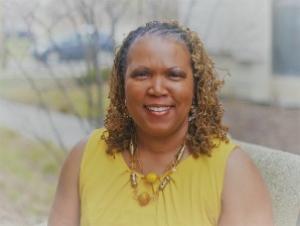
Just as we are gaining aplomb in maneuvering all of the bells and whistles of Zoom, Facebook Live, and Flipgrid, technology pushes the academy to catch up once again. The world of Artificial Intelligence and robot technology is at the door, not waiting for anyone to open it, but forcefully dismantling the hinges. As many institutions turn their face towards another academic year, faculty, staff, and students must also come vis-à-vis with that which mimics human likeness but which lacks flesh and blood. ChatGPT and its kin models are causing many professors to reboot syllabi, reconstruct lesson plans, and reorient course construction. ChatGPT or Chat Generative Pre-Trained Tranformers is a type of artificial intelligence. This AI is in essence a chatbot that communicates with people in a proto-human fashion. It also has the “intelligence” to generate unique texts. ChatGPT answers questions via prompts humans provide, composes essays, offers advice, and even gives wellness tips. This generative AI automatically produces content as if it is merely chatting. Whereas the most known model is ChatGPT, there are other forms of generative AI tools. Swimming in the AI waters are Microsoft Bing, Google Bard, OpenAssistant, Hugging Chat, Trinka, AutoGPT, and RizzGPT, to name a few. So not to leave Jesus out of the mix, a newly developed Christian ChatGPT, or BibleMate, purportedly fosters spiritual growth and development. Sounds okay, right? It’s another resource for students, yes? Perhaps this tool could carry some of the teaching water? A Bible supplement can’t be bad, can it? Maybe. Maybe not. There could be some benefits to ChatGPT and its family of AI. Students have another research tool. If anyone needs a quick fix, ChatGPT immediately answers when asked. With so much online learning precipitated by Covid-19, such generative chats could lead towards additional academic access. Furthermore, the text-to-speech formats may assist with able-bodiedness and neurodiversity accommodations within the classroom. AI as a teaching tool has the potential to abet grading, creating syllabi, and the developing of ideas to boost classroom participation. However, where there is good, there is naturally downfall. Because ChatGPT continues to generate the more it is engaged, a student could use it to yield a complete research paper. However, these AI tools do not craft citations. Thus, any professor will give much academic shade to such non-sourced work. After all, the point of a research paper is to discern how well one has engaged scholars who agree and disagree with a declared thesis. The “P” in ChatGPT could stand for “plagiarism.” Additionally, ChatGPT does not guarantee accuracy, nor explain the source of its information. Thus some models provide anachronistic information or refer to events or topics through a specific period or year. Occasionally, what these AI tools proffer is incomprehensible. There is more. My point here is to start the conversation…. Standing on the cusp of another year in the hallowed halls of academia, the question of whether to AI or not to AI is a critical one. AI has been around in some form or fashion for decades, and it is not going away. Dare I say students probably know more about its use than professors. Yet all is not lost. To lessen any angst or disgust take a free course. There could be a way to integrate ChatGPT or the like in one’s classes. Professors could use it as a teaching tool to pin improper citation methods and point to inaccurate information, then pivot to sound research methods and personalized class assignments which cannot be “generated.” Again, there is more. Here’s to starting the conversation. Actually, here’s to continuing the dialogue as the ChatGPT train has already left the artificial intelligence station.
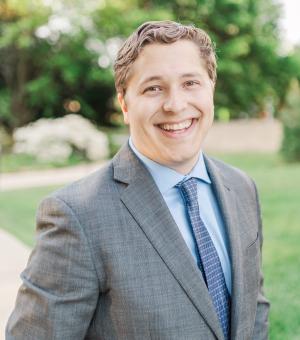
Abstract: This is the first part of a collection of poems showcasing the personal exploration of a teaching identity grounded in grief experiences, one of the aspects of identity educators carry into the classroom. The use of poetry permits an open theological exploration in which the author examines aspects of his life through the lens of religious allusions and imagery including the creation narratives, Cain and Abel, and Hannah. Specifically, the author engages the experience of growing up in a family impacted by the death of his brother who died prior to the author’s own birth. The experience of being a “substitute” and a “teacher” is represented within the poetry. The series begins with childhood encounters with loss and moves through life and teaching experiences marked by grief. In the Beginning: The First Account of Creation Orientation: As the students and their families file into a multipurpose room somehow simultaneously drab and new, I allow my mind to wonder about the myths these students carry about their families’ creation. Without meaning to, my mind falls backward, remembering how in the beginning, when God created my family, I must’ve been somewhere in the formless void as darkness began to cover the face of my parents, while a wind of grief swept over the face of my community. I recall the darkness hiding them on his birthday, the anniversary of his death, and the holidays. I wish there weren't so many holidays. Then the great Teacher said, “Let there be Zachary,” and there I was. And I saw that I was supposed to be good, and so I separated myself from the darkness… or at least, I tried. My teachers loved how hard I tried. I called the light ours, and I called the darkness mine. And there was anxiety, and there was laughter: my childhood. I come to my senses. Anxiety and laughter linger as I pick up the microphone and welcome my new students to the end of their childhoods. “Today is the beginning…” Accidental Cain Reading my course evaluations, I realize I may be too sensitive. “This reading was impossible.” one student wrote. “Literally impossible.” I begin my investigation and piece together the evidence for why my textual selections missed the mark. But then I get lost in another long-winded lecture to an audience of one, thinking about how we are here, together, right now, on this floating rock, in outer space, something that’s always seemed impossible to me. Literally impossible. Why am I here? It’s impossible that I killed my brother. I was born two years after he died. Literally impossible. Yet until the age of twelve I asked myself the questions the Lord asked Cain, “Where is your brother?” “What have you done?” I listened, and I heard my brother’s blood crying out from the ground. It was sad music that I could barely hear, but it left a ringing in my ear. So I became a wonder-er and a wanderer, and I made my way to the land of Nod, east of Eden, But even after I turned twelve, and then seventeen, and then thirty the ringing never went away. I was too scared to ask to watch the home movies so I could know what he sounded like. I wondered what his embrace would feel like– would he have been the kind of big brother that hugged his baby brother, or would he have withheld his affection to toughen me up? Maybe I wouldn’t have been so sensitive, then. I pictured the car crashing again and again. Did he die upon impact? Did he know he was dying? Was there part of him that ever wanted to die? Mom wanted to die, so maybe that’s why she loves him so much. Maybe they had that in common. I don’t think we’d have much in common at all. An unnecessary worry, but such worries are my currency. Why wouldn’t God just accept Cain’s sacrifice? Maybe Cain was too sensitive, too. Maybe I’ll find a video for next semester. Sonny In moments of solitude, I stare intently at the strange wooden case of what’s left of your life, a child playing secret agent, but feeling like a detective who is also the lead suspect. I examine the trophies and books and what I think is your wallet, with a note your teacher confiscated. You never were a fan of teachers, Dad said. I’m too afraid to open the case. I’m as trapped as your belongings: a carefully curated catastrophe. Now you show up in dreams and nightmares, and people chase you But you shush them, or you turn to mist. And I sit in a strange kind of envy, an outsider among those who miss Sonny.
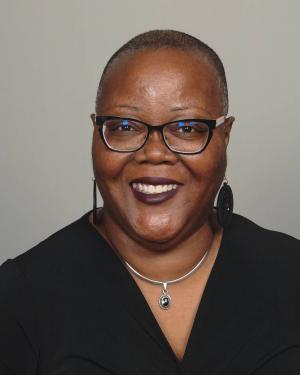
For the past seven months I have been immersed in storytelling. My small project grant, Black Women’s Storytelling as Healing Pedagogy, has taken me on a journey of wonder, insight, wisdom, knowledge, revelation, and so much more. I had conversations with eleven Black women storytellers who are living their vocational calling at the intersection of the church and academy. Their definitions of story and personal practices of storytelling inform their individual and collective approaches to healing pedagogy that inspires human flourishing. The culminating event of this project was a storytelling excursion to Washington DC, to visit the Smithsonian National Museum of African American History and Culture. This experience propelled me to the mountaintop of storytelling centered on the African Diasporic experience. Let me share one of a multitude of stories that expanded my worldview.Jim Crow Laws and lynch mobs were a common part of the landscape of the United States prior to the civil war. They continue in a variety of ways beyond the strange fruit that hung from southern trees that Ancestor Billie Holiday sang about. Now unarmed and nonviolent Black men, women, and children serve as target practice for those commissioned to serve and protect.Remembering the 1920’s to 1930’s in Marshall, Texas, and at Wiley College in particular, Professor Melvin B. Tolson confronted racist attitudes and actions to establish a debate team which he knew would be equal to any white teams during that time. The students’ have been given the name “The Great Debaters” and competed in the first inter-racial debate ever held in the history of the south.The film, “The Great Debaters,” was introduced to the world in 2007. The story centered around the young students and their coach, Tolson, played by the film’s director, Denzel Washington. “The Great Debaters” is one of my favorite movies because of its historical significance and embodiment of Black Excellence.During my tour of the museum, I marveled as I thoughtfully and carefully viewed the exhibits and artifacts. One exhibit in particular caught my eye. It was a flier depicting the original Great Debaters from Wiley College. I found myself drawn to the photos of these young men and women, recalling the struggles and obstacles they had to overcome as they sought to establish themselves as just as good or better than their white counterparts in the field of forensics. As I stood there reflecting and paying homage to my Wiley College ancestors who faced the realities of domestic terror in the south, I heard the word “RESOLVED,” in my heart, mind, soul, body, and spirit.During a debate, a resolve is a specific statement or question up for debate. It is also a determination to do or refrain from doing something. Resolve is to come to a conclusion. I asked God, what is the RESOLVE, or what is to be determined, as I engage, explore, and experience the museum? I was led to Psalm 118: 17. BE IT RESOLVED: “We (Black people) will not die, but live and proclaim what the Lord has done.” This is the story of MY people throughout all generations. We will not die, but live, and will proclaim what the Lord has done. Ancestor Maya Angelou with her soul’s conviction said it poignantly in her world-renowned poem, “And Still I Rise”:Out of the huts of history’s shameI riseUp from a past that’s rooted in painI riseI'm a black ocean, leaping and wide,Welling and swelling I bear in the tide. Leaving behind nights of terror and fearI riseInto a daybreak that’s wondrously clearI riseBringing the gifts that my ancestors gave,I am the dream and the hope of the slave.I riseI riseI rise. RESOLVED—We will not die, but live, and proclaim what the Lord has done.
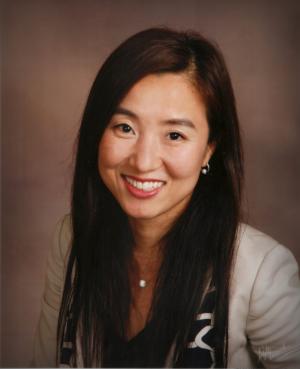
On a day when the National Weather Service issued warnings about severe thunderstorms and cold temperatures accompanied by snow and ice, I received multiple emails from students expressing their emotional distress and difficulty in focusing on their learning within the classroom, attributing their distress to climate change. One student wrote “I have had two severe hives breakouts this semester that seem to have been impacted by the weather/temperature and walking outdoors… and I am very worried that the colder temperature today combined with the snow/ice could trigger another breakout.” She shared that her hive breakouts were related to rapid temperature drops. According to a report by the US federal government, climate change has been identified as the cause of a wide spectrum of mental health challenges, spanning from mild stress and distress symptoms to severe clinical conditions like anxiety, depression, post-traumatic stress disorder, and even thoughts of self-harm.[1] The impact of climate change on students is evident in the classroom, as it leads to extreme temperatures and weather patterns, affecting their learning experience. This winter, in particular, presented significant challenges due to rapid climate shifts, disrupting both students and myself. Consequently, I made the decision to adapt the learning approach or modify the course materials to address and respond to the needs of students who were dealing with ecological distress from climate change. People living in the context of climate change know it is no longer a distant threat but an unavoidable reality. They directly or indirectly experience extreme weather events, the loss of biodiversity, and the degradation of ecosystems. These experiences keep interrupting the learning community by leaving people feeling overwhelmed, powerless, angry, full of grief, and anxious about the future.[2] It requires educators to understand clinical responses of learners when ecological distress becomes visible in the classroom. As theological educators, it is vital to acknowledge and support students’ concerns about climate change, creating a safe space for them to express their fears and emotions while navigating their psychological responses to ecological distress. Establishing a safe and supportive learning environment is crucial, and I strongly recommend prioritizing regular “check-ins.” These check-ins allow students to share their personal experiences, thoughts, and fears related to the climate. By tapping into their lived experiences, we can employ diverse teaching methods to enhance their learning opportunities and address their concerns about the future. Moreover, this practice promotes emotional solidarity within the classroom, validating intense emotions and enabling students to explore coping strategies and productive ways of learning through listening to one another’s experiences. Theological educators with students in the classroom stand at the intersection integrating ecological themes and spiritual practices with a theological reflection of creation. Karen Baker-Fletcher, in A Singing Something: Womanist Reflections on Anna Julia Cooper,[3] highlights a spirituality centered on justice and creation, which invokes a profound perception of a sense of God within nature. The embodiment of God, Spirit, Christ, Creation, and humans emphasizes the interconnectedness of all life and the interrelationality of all creation. By connecting theology and pastoral care and counseling, I relate to the importance of communal care in the classroom. Being sensitive to ecological distress resulting from climate change in the classroom is to create a learning community based on “communal care,” which opens dialogue about climate change and its impact on individuals and communities while instilling hope and resilience. By embracing the learner’s emotional and psychological struggles and demonstrating a positive attitude, the educator’s engagement shows resilience in the face of challenges in the learning process. It establishes a learning community where students motivate themselves in sharing their stories of individuals and communities and participate in offering communal care in the classroom. Cultivating a sense of hope and resilience empowers students to navigate the challenges of climate change and to have a sense of purpose and agency in the learning process. As climate change continues to squeeze into the classroom, theological educators have a significant role to play in addressing the ecological distress experienced by students. Although it can be quite overwhelming, we can recognize the urgency of the environmental crisis, begin working on acknowledging and validating ecological distress, reflect theologically, engage with a justice-oriented spirituality of creation, and build a learning community with communal care to instill hope and resiliency. Theological educators and learners have a collective role in working towards a more sustainable and just future. [1] Daniel Dodgen, Darrin Donato, Nancy Kelly, Annette La Greca, Joshua Marganstein, Joseph Reser, Josef Ruzek, et al. “Chapter 8: Mental Health and Wellbeing” in The Impacts of Climate Change on Human Health in the United States: A Scientific Assessment (Washington, D.C.: US Global Change Research Program, 2016) 217–246. http://dx.doi.org/10.7930/J0TX3C9H. [2] M. Ojala, “Facing Anxiety in Climate Change Education: From Therapeutic Practice to Hopeful Transgressive Learning,” Canadian Journal of Environmental Education 21 (2016): 41–56. [3] K. Baker-Fletcher, A Singing Something: Womanist Reflections on Anna Julia Cooper (New York: Crossroad, 1994).
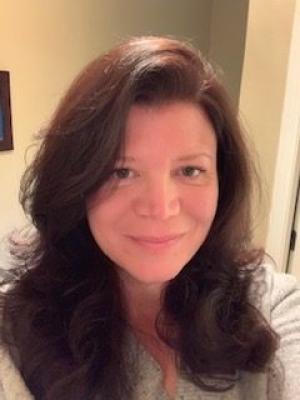

What is happening in the world is happening to each of us. On May 3, 2023, Dr. Vivek Murthy, United States Surgeon General, released an advisory calling attention to the public health crisis of loneliness, isolation, and lack of connection between people in our country. Disconnection fundamentally affects mental, physical, emotional, spiritual, and intellectual health. Even before the COVID-19 quarantine, approximately half of the U.S. adults reported experiencing measurable levels of loneliness and isolation. Since the quarantine, we can imagine the sharp increase in isolation and fear. We, students/faculty/administrators, are part of this affected demographic. Newspapers, in small towns and major cities, provided news that fed democracy and linked people overwhelmed by otherness and isolation. In the recent past, print, and digital news provided a “watchdog” service aimed at holding our civic institutions accountable. The newspaper industry has reported a period of immense disruption and financial distress leaving news deserts across the country. Public service journalism that spotlighted the major issues confronting communities has shrunk. This leaves residents without the information they need to discuss and to solve their problems. Whether delivered over the internet, airwaves or in print, the lack of vitality in local news coverage exacerbates our feelings of isolation. Our loneliness is further compounded by the dichotomized assumptions promoted through social media. People depend upon memes, soundbites, and social media threads for facts, storylines, and information on complicated issues. Students/faculty/administrators, like the public, are immersed in social media culture. The rhetoric of “us versus them” has saturated our thinking and has become a presumed framework of discourse. The barrage of loss, hatreds, separation, grief, and rhetoric of division is affecting us – all of us. We are living in an extended and deepening national moment of blaming, clinched fists, gritted teeth, and suspicion for people beyond our chosen tribes, beyond our chosen communities, beyond those people with whom we agree and have chosen political affinity. There is growing suspicion of difference. There is a feeling that “the other shoe is about to drop,” without knowing when or what the shoe will be. Here is the strangeness. While the country becomes more polarized and less informed - our daily lives and routines are relatively unchanged. How can it be – business as usual? Our everydayness continues relatively unscathed. We shop in the same grocery store. Go to the same big box stores. Perform the activities of employment. Participate in the same schools, churches, and mosques. Use the same online streaming services. While we suffer from profound loneliness, our everydayness has not changed much. We are simultaneously uninterrupted and fractured. Division and social upheaval are smoldering while we operate in the relative customary school year start. School has begun. Teachers/students/administrators are re-convening with the same rituals, rites, and routines as always. Syllabi have been distributed. Lessons have begun. Committee meetings are back in swing. At-a-glance, we look fine. Yet, fear and uncertainty are palpable. We must be aware that loneliness, fear, and isolation tend to manifest, not where it is easily seen in our daily activities, but in our interior spaces. Our fears are performed in relationships. Our isolation becomes apparent when we are with one another. Our trouble, pain, and turmoil are witnessed when we are working together and with others. The start of school makes us vulnerable to seeing and being seen. We are, when we gather-back, reconstituting our relationships while we are knee deep in our loneliness. Our relationships expose our fears, isolation and mental unwellness. Conflicts will soon arise. My caution is that, given the effects of the wider political climate, the veneer of calm and routine will soon dissipate. Are your classrooms ready for conflict? The most vulnerable people are those who bring diversity and difference into the faculty/student body/administration. For those faculties and student bodies who have, recently or over a very long period, accepted the challenge of diversity – this is potentially a very troubled moment for teaching. Diversity (race, class, political, gender, nationality, creed) is precisely what is not tolerated in the growing USA climate and yet diversity is what is needed to move us away from isolation and toward conversation, toward peace, toward community. The lack of tangible conflict, or the absence of specific dispute, does not mean that institutional fissures are not forming along the lines of diversity. Unaltered routines, unexamined practices, and undiscerning leadership will miss the hushed emerging crisis in community. Do not wait until difference turns into intolerance, vindictiveness, expressions of hatred, and war to invite your school into meaningful conversations. There are no recipes, formulas, or roadmaps for this brittle moment. Your school must engage its own communities as they are unique in the world and as you live together in this uncharted malaise. Gladly, there are some big ideas to which we can attend to help us make sense of the places where you teach and learn. Now, during the beginning of the semester, find ways to collectively reflect upon these kinds of questions in anticipation of conflict: What are the consequences of difference? What are the effects of difference? What meaningful project can we work on together? What sustains us through conflict? What is a good conflict and how are disputes processed with fairness, justice, and for maturity of community? Consider facilitating these kinds of habits and practices in your school or in your classroom: acknowledge the diversity and celebrate it; make the community aware of the diversities which exist; demonstrate how diversity strengthens the mission of community; attend to creating cultures of respect and regard for difference; create conversation groups across diversity to listen to one another; construct institutional processes and protocols before there is conflict; create an ombuds position; message into the community that difference is a strength and not a weakness; design new rituals and rites that support and honor diversity; facilitate conversations on the nature of hatred and the detriment of animosity; create policies of zero tolerance for hate speech; work on practices of solidarity; make a communal project of peace, empathy, compassion and forgiveness; admire courage and bravery; award truth telling; create artwork and expressions which honor difference; complexify dichotomous thinking; find ways for people to work together against divisiveness, objectification, and authoritarian assumptions. When, not if, the ugly expressions of hatred and entitlement bubble up in your community – be ready. You will not have the luxury of feigning surprise. Conflicts, subtle or violent, will arise along identity fault lines and your institution must be ready so that those targeted by the dispute are not severely hurt, ostracized, or killed.
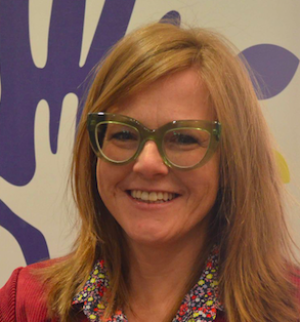
“It’s like you’re crying out for them to trust you.” These insightful words were said to me nearly 10 years ago in a small group conversation at a Wabash Workshop for Pre-Tenure Theological School Faculty. I remember the conversation with gratitude. We were sharing with each other what we had written down individually in response to reflection prompts about our experience in the classroom. The prompts had elicited some unprocessed emotions in me about my first few years of teaching. I was fortunate to get a teaching job the same semester I earned my Ph.D. I had some confidence in my abilities to do the job well, as I had graduated at the top of my class and gained some valuable classroom experience and mentoring in graduate school. But what little confidence I had was quickly shaken. After I had distributed and explained the syllabus in my first class, a student declared, “We’re going to run you back to Toronto where you came from!” Everyone laughed and cheered. This class was comprised mostly of men, ranging in age from 40-70 years old, with one year left in their graduate program before they were ordained to the deaconate in the Roman Catholic Church. I stood before them as a freshly minted Ph.D., who had just turned 30 years old, and had not yet had the time or experience to find confidence my teaching voice. The demanding syllabus I had crafted may have surprised them, given my age, gender, and long blond hair. I made it through that first semester, but I have the scars to prove it. I still remember one classroom discussion in which a student admitted, “I don’t know why I like to pick on you so much.” In another class, after a student bluntly told me that he didn’t know why I was teaching the way I was, I shouted, “I have a PhD!” In hindsight, over a decade later, I can see the situation for what it was. My body was not welcome in the space. Just by standing in front of the class, as a woman in a position of religious authority, I challenged their assumptions of credible leadership. It’s likely that my students asked the (un)conscious question, “If she can’t be ordained, can she teach those who will?” At the time though, the resistance I faced in the classroom, caused me to doubt my teaching vocation. “Maybe they’re right,” I worried. “Maybe I just don’t belong.” As a first-generation college student, I always felt like a bit of a misfit in graduate school. But now I was feeling for the first-time like a misfit in the church. Sharing these experiences with my Wabash cohort colleagues brought healing and affirmation of my teaching vocation. Each of us in the cohort were all so different in so many ways (i.e., personality, educational background, race, ability, religious affiliation, culture) but we shared a vocation (in addition to a lot of food and fun). Others had not been welcomed in spaces due to their embodiment, in far more violent, ongoing, and consistent ways than I had ever experienced. My cohort experience was also free from the academic pretense that so often deepened my self-doubt. I felt like I could be exactly who I was and that I was valued for it. I belonged. As I began to trust my vocation and my place in the academy and church, my eager desire for my students to trust me waned. It didn’t matter as much. While trust is necessary for real intellectual and spiritual formation to occur, it can’t be earned, begged for, or contrived. In fact, now I understand that the most certain way to gain this trust from students is by embracing who I uniquely am and being true to my vocation.
Categories
Write for us
We invite friends and colleagues of the Wabash Center from across North America to contribute periodic blog posts for one of our several blog series.
Contact:
Donald Quist
quistd@wabash.edu
Educational Design Manager, Wabash Center
Most Popular

Are You Okay?
Posted by Nancy Lynne Westfield, Ph.D. on October 1, 2025

On Plagiarism and Feeling Betrayed
Posted by Katherine Turpin on October 27, 2025

Executive Leadership Involves New Questions
Posted by Nancy Lynne Westfield, Ph.D. on December 1, 2025

Embracing the Imposter Within
Posted by Fred Glennon on September 15, 2025
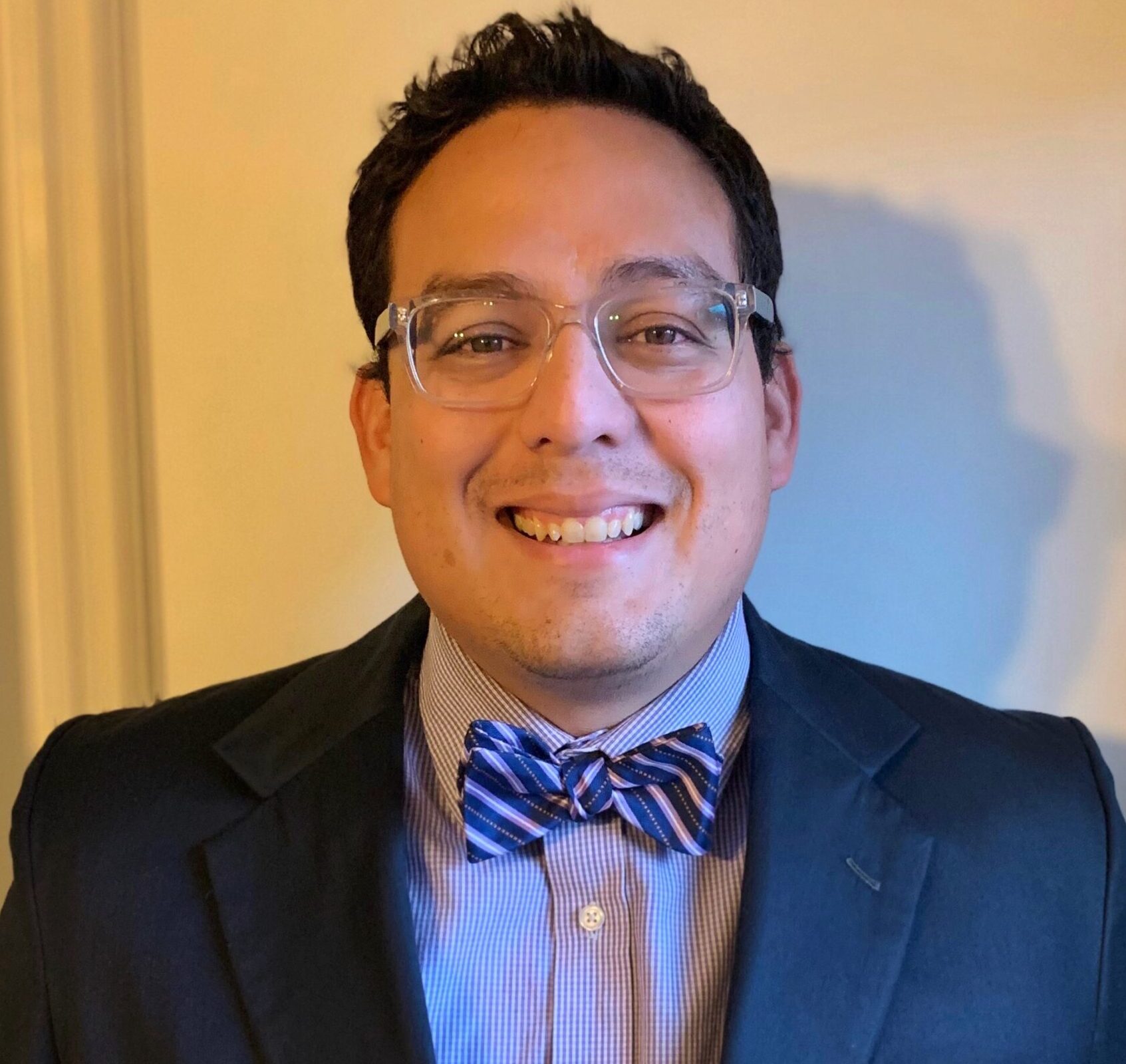
Xenophobia
Posted by Daniel Orlando Álvarez on October 15, 2025